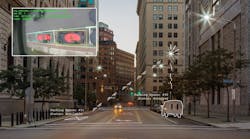The rapid rate at which LEDs have entered and become ubiquitous in the lighting market has presented industry, R&D and regulatory bodies with a number of measurement challenges. LEDs are already replacing incandescent lighting in many scenarios and are currently being developed for specialised applications such as combined brake and indicator lights in the automotive industry. They are also being used in more safety-critical areas including railway signalling and medical phototherapy.
LEDs now come in a wide variety of wavelengths (UV through the visible to IR), brightness values (for example 140 lm flux from a single green LED produced by Lumileds and formats (single packaged LEDs, multiple LEDs in clusters, and even novel technology including LED backlights and organic LEDs). It has been shown that differences in inter-industry measurements are still large and yet it is necessary to measure LEDs in a precise, accurate, well-defined and, we would say, traceable manner.
+++++++
To read the rest of this article, please register for a free subscription to LEDs Magazine Review.Why?
Existing subscribers:Click here to enter your reader number and download the new issue.



![An installer uses a cell phone to configure a connected lighting system in a Next Generation Lighting Systems (NGLS) living lab. [Photo credit: Image courtesy of Pacific Northwest National Laboratory (PNNL) and NGLS.] An installer uses a cell phone to configure a connected lighting system in a Next Generation Lighting Systems (NGLS) living lab. [Photo credit: Image courtesy of Pacific Northwest National Laboratory (PNNL) and NGLS.]](https://img.ledsmagazine.com/files/base/ebm/leds/image/2020/06/NGLS_Photo_2.5ed693de53fa2.png?auto=format,compress&fit=crop&q=45&h=139&height=139&w=250&width=250)


